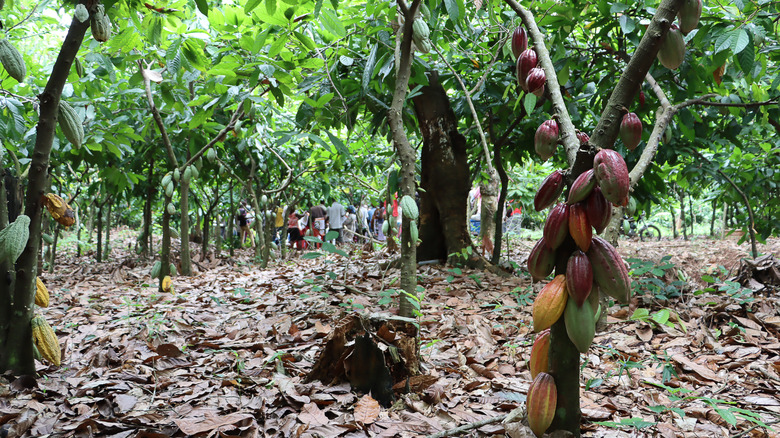Will Hershey's Recent Price Hikes Hurt Your Pockets This Halloween?
The global chocolate supply has been in trouble for years largely due to climate, as extreme weather and crop disease wreak havoc on West African cocoa farms and affect their supply. As a result, chocolate prices are soaring: CNBC reported that a metric ton of chocolate cost $2,374 in 2022; in January 2025, the same amount was $8,177 and only decreased to $7,855 last month.
To contend with rising cocoa prices, The Hershey Company announced at the end of July 2025 that it was increasing prices on full-size and king-size versions of some of its products, like Reese's and Kit Kat. Though Hershey didn't give an exact figure, retail prices are certain to increase in response. For example, Sheetz convenience store is raising prices on the affected candy bars by 26%, with those changes hitting consumers on September 17 (via PennLive).
However, Hershey confirmed to The Takeout that the price increases won't apply to Halloween-specific candy. Hershey is, in fact, mostly absorbing the cocoa price hike — about 75% of its products will still be less than $4 each (per Today). The same might not be able to be said for other chocolate corporations like the Swiss chocolate company Lindt, which raised its prices by 15.8% in the first half of 2025, according to AP News.
As the cocoa supply decreases, costs increase
More than 5 million metric tons of cocoa beans are farmed and processed across the world every year, and Africa is responsible for 71% of that amount, according to the Swiss Platform for Sustainable Cocoa. The two highest cocoa producers – Ghana and Côte d'Ivoire — are responsible for around 50% of the global supply.
Climate change, however, has hurt cocoa farming in the region through a combination of high temperatures and wet conditions. Cacao trees, which produce the raw form of cocoa beans, grow best in temperatures around 89 degrees Fahrenheit, but climate data from the past decade has shown that more than 65% of that area has seen temperatures exceeding that limit each year. High heat results in cacao flower loss and smaller bean pods that rot quickly.
Rainfall also impacts cacao tree growth. The plants thrive when rainfall averages between 60 and 80 inches per year, but rainfall was up by 40% in certain areas during 2024, causing floods that can damage crops. On the other hand, unexpectedly low rainfall during some months impacted typical bean maturation times. Adding to the problems were diseases such as swollen shoot virus, which, in 2023, affected more than 30% of land dedicated to cocoa trees in that country, per Reuters. As a result, harvests for 2025 were lower than usual, which helped to spike chocolate prices — this situation was also the not-so-sweet reason Valentine's Day chocolates were pricey this year.

